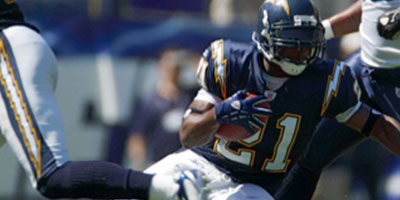Movement Training for Better Performance

As an athlete, you are not your 40 time. You are not your bench press max. You aren’t even your vertical leap. Those numbers give you some information about yourself as an athlete, but they do not predict success on the field or court because game performance is not the same as performance in the weight room. There is an unfortunate disconnect between what an athlete needs to succeed on the court and the objective measures used to gauge how well trained that athlete is. Game performance is all about efficient, powerful, and effective movement. The measures of “athletic ability” that are often used can give good information, but they don’t tell us everything we need to know about that athlete and how they can get better. In fact, often the athletes with the best numbers are not the best players. That fact alone should expose the gap between what we are measuring and what is truly important for performance.
Since athletes come to us to get healthy, faster, stronger, and more explosive, our job as performance specialists is to evaluate the sequences of movement most critical to performance in the athlete’s sport and find out where their glitches are. That means assessing those key movement sequences and identifying those obstacles that prevent optimal function. These obstacles can be diverse and seemingly unrelated, and many coaches and trainers avoid addressing them out of fear of the unknown. If they aren’t addressed, though, they will continue to underachieve and may even be more likely to get hurt.
When we look at athletes, the first thing we need to address if they are unhappy with their performance or have pain performing is to understand the movements involved. Every sport is comprised of many movements, it is important to identify and prioritize those movements most critical to success. One common complaint that we get from many athletes is that they want to get quicker on the court or field, particularly when it comes to quick changes of direction. Below is an example of a movement sequence that we see in football that is also critical for other reactive sports such as soccer, basketball, and football.
Movement Analysis for Football

- The stretch placed on the left ankle and foot
- The angle of his lower body relative to his upper body
- The stretch placed on the right ankle and foot
- The difference in position between the right hip and knee (relatively extended) and left hip and knee (flexed significantly).
Overall, it’s a pretty impressive body position that gives him the ability to stop on a dime and explode the other way. His body allows him to handle the massive amount of right lateral momentum he’s built up by stretching through his considerable range of motion and storing energy.
Knowing what we’ve seen, if a young running back comes in and puts his trust in us to train him, do you think we should check his ankle and hip mobility? Should we train him to be able to load and explode in all directions? Should we assume that if we get him stronger at the squat and power clean that it will carry over to game breaking movements like this? It should be clear that the first two questions should be yes answers, and the third is a definite no.
Training for the Improved Cutting
Now that we have established a functional understanding of the movement involved in cutting we can decide how to prepare our athlete to enhance their performance. Here are a few key points we would address:
–Mobilize the ankle through its full functional range of motion. If you notice in the above picture the right ankle is also going through a lot of motion, but in the opposite direction of the left foot. (pic)
–Integrate the foot and hip together in movement requiring the hip to load with flexion, adduction, and external rotation and the foot to load heavily into eversion, pronation, and external rotation. We might use a crossover lunge to achieve such a motion. (See picture).
–Enhance the load using either dumbbells, barbells, medicine balls, or even the athlete’s own body weight. As the athlete gets stronger, we can continue to modify the load applied. (pic)
–Train for the crossover. It seems obvious that you would do this, but not all programs do. It is important to train the athlete to crossover and explode, but more importantly, they should be trained to crossover from a variety of positions, at different speeds, and at different angles. Too often athletes do good drills but do them exactly the same every time. When game time comes, you’ll likely have to do the same move in less space, with more speed, or with someone holding you. If you haven’t trained for such circumstances, your preparation won’t be as good as it could have been. (pic)
SHARE IT

